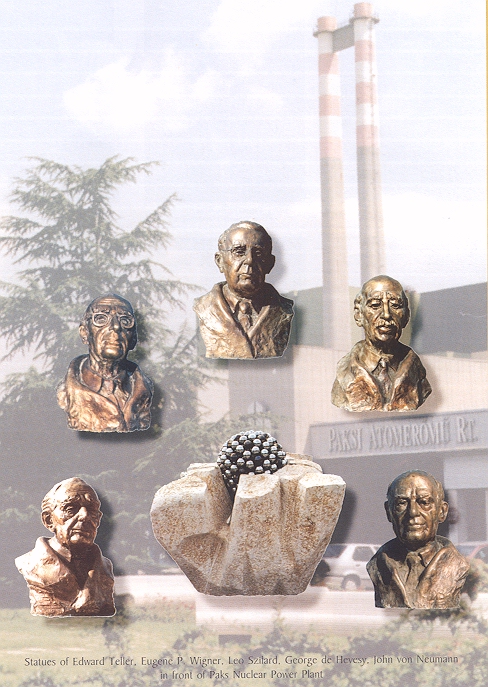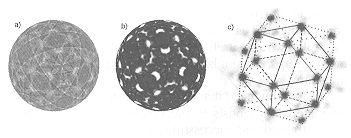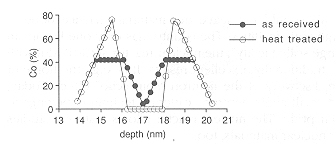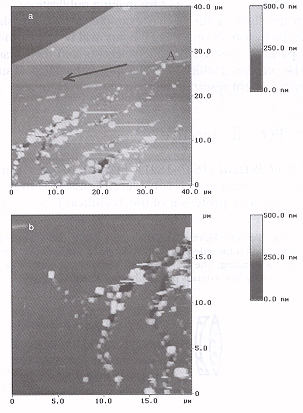
Fizikai Szemle honlap |
Tartalomjegyzék |
József Gyulai
HAS Research Institute for
Technical Physics and Materials Science
and Department of Physics,
Technical University of Budapest
To write a review on materials science in a Journal devoted to physics is not straightforward. Materials science "near-to-physics" is only a part of "materials science", in general. As the "near-to-physics" part is developed, studied predominantly by physicists and chemists, it is oriented first to discover "phenomena" and develop materials with new properties. Materials science closer to "engineering", in contrast, is even more an interdisciplinary field, which considers and uses laws and phenomena discovered, as "tools" which allow preparation first and, finally, production of the materials structures. In modern materials science it is a demand that the to-be-achieved properties should be predetermined in contrast to historical materials science, which was based on experience and practice. The modern goal can be achieved if the "operation" of the "tools" is understood on the basis of first principles and their effect is known down to the atomic scale. In this case, not only computer modeling, in general, can be developed, but "physical" modeling is feasible, which paves the road for further development. In most elaborate cases, like semiconductor device production, processes can be simulated and analyzed on a computer even before materials-consuming experimentation.
With this definition, industry's "production techniques" are nothing else, but a prescribed set of rules, parameters (time, temperature, pressure, etc.) under which these "tools" operate to form the desired structure reproducibly.
"Materials scientific" achievements of the Hungarians date back to limes of the Great Migrations when - according to sagas - their Asian bow with its "multi-layer structure" counted as the world's best and, with our late apology, most feared. In the medieval centuries, the international character of our kings' court resulted in an all-European knowledge which, in 1367, e.g., led to foundation of the first, though short-lived university in a Celtic/Roman/Hungarian city, Sopianae/Quinquecclesiae/Pécs. During the limes of the Turkish expansion and following the return of Hungarian students from universities of Northern Italy and of the Netherlands, it was Transylvania where arts and sciences could flourish. Shortly after the "Ottoman limes", to better exploit the rich gold and silver mines in the Carpathian Mountains, the first school for mining was established in Selmecbánya/Banska Stiavnica (Slovakia), already in 1735. This was subsequently promoted by Empress Maria Theresia to a Mining Academy in 1762, one of the first of its kind. Today, the University of Miskolc (northeastern Hungary) proudly continues its heritage.
An unprecedented boom in technical sciences arrived with Western craftsmen during the second half of the 19th century when new industries were established all over the reconciled Austro-Hungarian Empire. The then achievements belong to the proud heritage of present day countries of the region. The most outstanding example in relation to this paper was probably the discovery of the AC transformer by three engineers of the Ganz Electric Works, Inc., M. Déri, O. Bláthy and K. Zipernowsky, in 1884.
In the 20th century, despite World War I and the new geopolitical situation, a limited boom still continued: outstanding schooling in the country, together with strong association to the scientific development in the West, brought internationally renowned fruits. Hungary slepped on a road paved even with Nobel Prizes for his internationally most successful sons. E.g., the laboratories of Tungsram Co. were place of many achievements in materials science. It was one of the leading laboratories in physics and technology of the incandescent lump from tungsten research to materials science of the filling gases with famous names as I. Bródy, T. Millner, P. Selényi, and others. Interesting to note here that Selényi's results in selenium-based document copying and corresponding patents served as basis of the later patents and development of today's xerography, too.
Another relevant fact to this topic is the application of quantum theory to solids, developed by E.P. Wigner in America with American "disciples" like J. Bardeen and F. Seitz.
Within the country, the most importunt materials science school of the limes was that of crystal physics and crystal growth by Z. Gyulai and I. Tarján, where also applications of ionit crystals were pioneered.
Commencing with the years before World War II and later, brought a shockingly different world. Many of the "best sons" were compelled to leave and others faced problems when stayed. Vitality of the community, however, made science survive into the sixties and seventies and physicists, materials scientists continued to work, helped in many ways by those who were active in the West.
The then government was somehow keen on technical sciences, maybe with a least publicized goal that knowledge would help to overcome difficulties posed on by the embargo. So-called "industrial research institutes" were established by the state mainly to satisfy this goal. In the field of materials science, one institute was founded for studying iron and steel and two for aluminum. The Hungarian Academy of Sciences (HAS) also established institutions; though with goals on achievements in basic science in physics and materials, one institute aiming at "Technical Physics" and others as part of a large research center, Central Research Institute for Physics (CRIP).

With the longer and longer leash for the scientific community of natural sciences in Hungary, many of us could make use of invitations by colleagues in the West. It is quite natural that successful and returning scientists did their best to continue topics of their Western successes and keep vital contacts with their invitees. This resulted in a very colorful scientific spectrum in the country. The variety turned to be not at all negative. On the contrary, this led to the situation that science represents in Hungary the most prepared field when entering the European Union is at stake. No wonder that Hungary's scientometry characteristics, e.g. citation per dollars invested, used to be outstanding in the region.
Last year a major restructuring of the institutes of the Hungarian Academy of Sciences occurred. Many institutes were merged and, thus, a base for solid state physics and near-to-physics materials science (with about two hundred scientists in two institutes) were founded. Groups dealing with similar topics in other institutes, additional scientific schools add to forces. Strong materials science is located at universities, too. When writing this summary, excluded were topics diffusely close to materials science, like optics, which is one of the strongest fields in the country. On the other side, we had to draw an, again diffuse, border towards near-to-engineering materials science.


Attached to this paper are tables summarizing the present situation in near-to-physics materials science. Table 1 shows modern needs of materials science and engineering in different important fields of human life. Labeled with acronyms are research organizations active in those fields (Table 2). It is obvious that near-to-physics materials science is probably the largest field in the country. Selection rule for the table was that a group included should be known internationally and some of them count to leading schools of the field. Thus, all of the research units mentioned here were and are honored by the international community, e.g., with the right to organize conferences, with different memberships, und, at least the principal investigators have tight contacts with important centers in the West. As a consequence, one can draw also a conclusion that modern materials science in the country today is overwhelmingly initiated by a strong will to join science in the developed world. Considering the medium developed status of the country, problems caused by the lack of knowledge-based local industry. This break between science and industry has, hopefully, only temporarily been enhanced with the collapse of the previous political system. We know that the West was successful in blocking proliferation of modern technologies to this part of the world. Therefore, under the new, but normal conditions modern industry in the Central-Eastern European region had to start from scratch. Best parts, e.g., the cream of the cream spin-off small and medium size enterprises (SME) of the early industrial research institutes, could catch up, survive, and often flourish and grow. Large "Behemoth" industries were usually less successful, but the best ones became part of multinational companies. It is a kard, but inevitable interest of the country to convince these companies that it is also in their interest to rely on local science and development. Recently, we have witnessed very positive changes in attitudes of many of the multinational companies as they start to bring here part of their research and open its pre-competitive part to universities and research institutes. Thinking on SMEs, the author feels that there should be a governmental help for them to develop their, now second generation products to success - a second "privatization aid" to overcome their handicap at the start a decade ago.




Though scientists here also have a handicap in comparison with their Western colleagues, as in this part of the world there was no parallel action to the development initiated by the SDI and similar programs in the West. Therefore, a modernizing injection in the near future seems to be a must to avoid a future scenario of slipping back first to the level of the developing countries and then to try to climb back sometime in the next century. This country's talents and potentials should find a free runway - also, when staying at home.
Table 3 and 4 show another section of the country's materials science. To materials science, possession of high quality preparation techniques is inevitable. Table 3 displays the variety of sample preparation techniques, which are kept running with enormous efforts to ensure competitiveness of science in the country. In materials science, a basic decision has to be met: where is the matching point set between research labs and the "users". Whether one makes studies on phenomena, which occur on samples treated, say, with a single and rather simple technique, or keeps a congruent set of techniques running which allow functional samples to be made. Today's science policies in the country clearly, but erroneously favor the first version. As it can be seen from Table 3, there is only one complete preparation laboratory in the country (for technology of semiconductors and sensorics thereof, in Research Institute for Technical Physics and Materials Science, TMS).



Another, less expensive leeway strategy is displayed on Table 4. One makes an effort to own or develop a high-level characterization technique and joins with his experience und, often with his own methodical developments, well-supported international groups. Le. takes part in evaluating their sophisticated samples, thus, in solutions of up-to-date problems. This fulfills easily the demand of financing agents, as it results in many wellcited papers. The large variety of characterization techniques available in the country (some of them in outstanding quality) proves clear successes of this strategy. The advantages and drawbacks of this strategy, which is enforced by these circumstances, are clear.
Before an unwanted conclusion, that we are just too numerous, it is timely to express our views on the importance of materials science as a whole - including even the science of biomaterials.
It is the author's strong belief that the best strategy for the survival of humankind would be to arrive at a zero-pollution world. This involves a task that all production and consumption processes should be converted into closed cycles. I.e., an industrial revolution is expected where, over today's goals of low pollution, saving energy and materials, full "recyclability" should be achieved. This seems to be based on three disciplines: energetics, to keep added heating of the Earth low, materials science, that enables us to keep up civilized functions, and an immense computing power maybe by quantum computing? - which is capable of handling this unheard-of task in logistics.
Fig. 1
If this goal were accepted in the world, there would be plenty to do in materials science. Scientists of this country are active and successful both in the studies of structural and functional materials. For historical reasons, however, semiconductor research and, especially, a teaching-related activity in the field occupied less than desirable role in our community. This was even enhanced by a tragic fire case in the first and last semiconductor factory of the country. Two academy institutes though were dealing both with silicon- and compoundbased studies, even producing certain devices. As was mentioned, TMS runs the country's only classified clean lab facility, recently aiming at different types of sensors. In all other research institutions on topics relevant to this review, only selected techniques are available.
Studies of metallic materials, in contrast to semiconductors, enjoyed rather satisfactory financing. Thus, in most research institutions a strong basis for these studies exists. Unfortunately, only a shrunk industry basis stands behind. To date, good instinct of our scientists helped to find still rewarding topics.
In a review, like this, it might be very difficult to enumerate the most successful areas without causing had feeling in those who were not mentioned. This is especially true in our topic with diffuse and overlapping boundaries.
There is one recent result, which was accepted by our community as the greatest success in solid state physics in the country during the last years. This is the first X-ray hologram of a crystalline solid with atomic resolution. This technique might develop into a new structural analytical technique of single crystals (Fig. 1).
The next row of successes, to the author's judgement, contains a couple of results in 1997-98, which are the "world's best" today - but, if they are truly excellent and important, they surely would not stay so for tomorrow.

Fig.
2. Demonstration of less-than-nm depth resolution of Auger profiling of cobalt, In spin valve structures applied in magnetic reading heads, the active region is a sandwich of 1 nm Co / 2.3 nm Cu / 1 nm Co layers. The as-sputtered layer shows undesired mixing which can be improved by phase separation during additional annealing (A.M. ZELTSER, K. PENTEK, M. MENYHARD, A. SULYOK - IEEE Transactions on Magnetics 34 (1998) 1417-1419).Using the unique position of the author, just a few examples of the years 1997-98, which are "in a draw" and may be representative for others in other years. A basically new analytical technique was developed and demonstrated to analyze local gas chemistry durrog Chemical Vapor Deposition (CVD). The technique is based on diffusing gaseous products through a drilled small hole in the sample and mass spectroscopy is carried out on the backside, gently, without after-ionization. First results already revealed true formation mechanisms for diamond. Again in analytical techniques, another group reached 1 nm depth resolution in Auger profiling with their newly developed ion gun (Fig. 2). Or, another peak quality experimental method was developed in the country, an ESR system with up to 225 GHz frequency revealed unknown details of fullerenes. Another group was first to detect the very last dislocated atoms in a branching ionic cascade (Fig. 3) and - in cooperation - to cut open a carbon nanotube showing the hole in the middle, in a nanotube produced by impact of swift heavy ions in graphite. Another group developed an electron spectroscopic method capable for resolving energy shifts of very deep core transitions in atoms. Finally, the discovery of another group that strain anisotropy in powder diffraction is caused by dislocations, led to a new procedure enabling simultaneous determination of crystal structure and microstructure.
Fig. 3.
We should not leave out materials science done at large scale facilities. The country has only one European "large scale facility", the nuclear reactor at CRIP AER with its, traditionally, excellent results. It is, e.g., the home of the discovery of the neutron "spin echo" effect. Today, the small angle neutron scattering technique belongs to their pride. The nuclear reactor allows materials studies for nuclear materials, too.
More and more colleagues make use of international laboratories in the fields. This refers to both for sample preparation, like heavy ion irradiation using the Dubna or the GANIL facilities, both for analyses, say, at different synchrotron light sources in Europe.
The author is a proud and optimistic member of the community and is, thus, convinced that these selected examples would surely be followed by other results by other groups, if a similar review were written in the coming years.
We are convinced that the community of near-to-physics materials scientists in the country with its over 300 highly trained and successful scientists has the power to stay in front of science provided they get the support they deserve.
Finally, the author expresses his deep thanks to many dozen members of the community, who constantly monitored and commented the preparation of this paper.